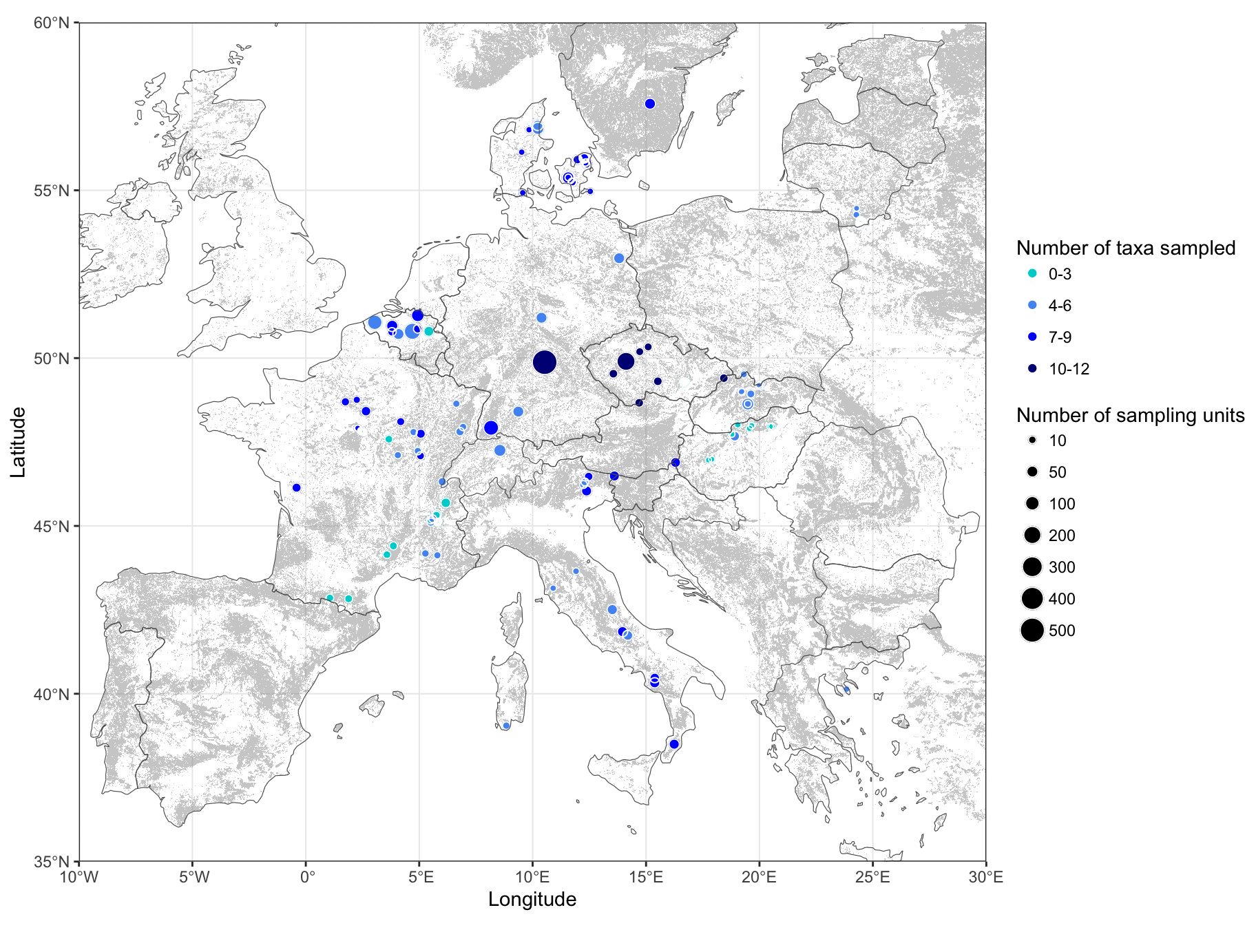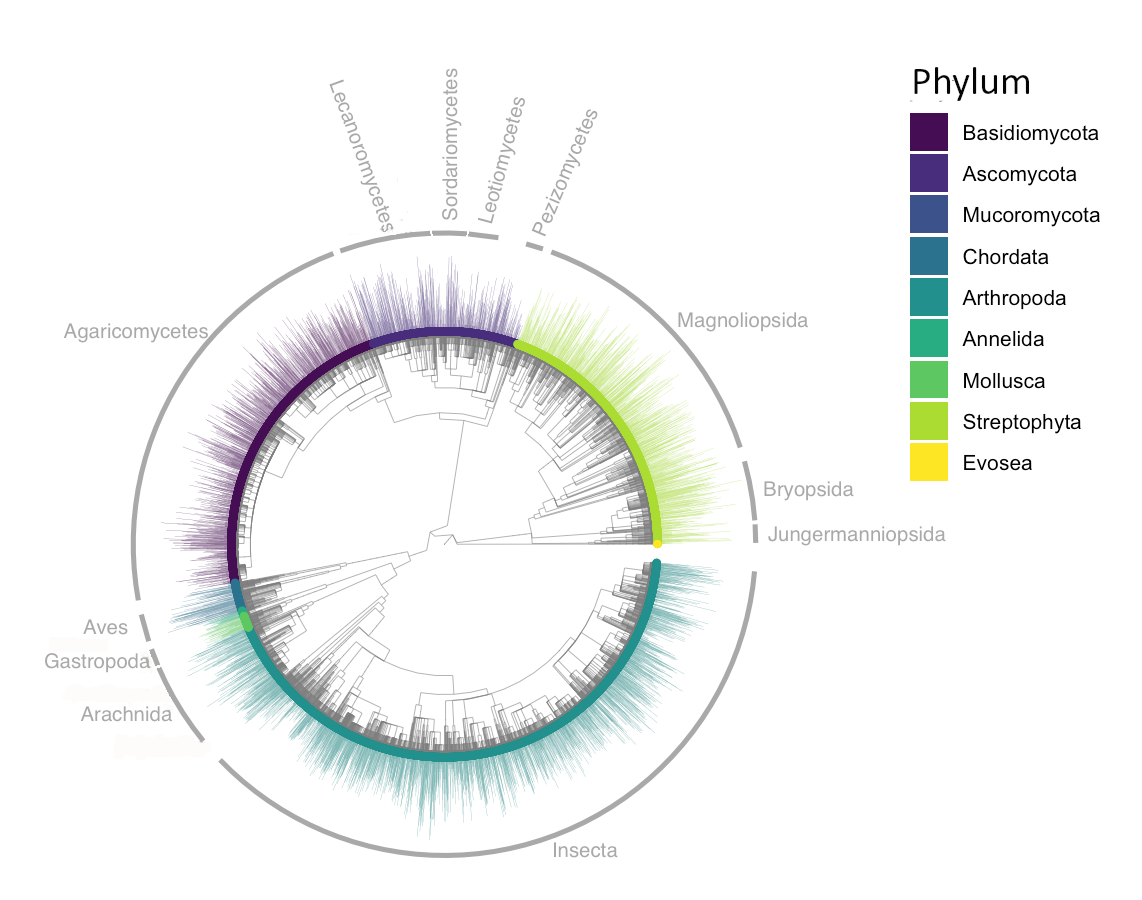When a snowball rolls down a mountain slope, more and more snow sticks to its surface making it bigger and bigger. For this reason, when an action causes similar actions we use the metaphoric term “snowball effect”.
The story of this article is the story of a small snowball rolling down a long slope, and it is therefore way longer than the stories of other articles I worked on.
If I recall the very beginning of the article ideation, the original small snowball, my mind goes to a cheerful and stimulating conference held in June 2013 in Ukraine on Primeval Forests, culminating in a wonderful trip to the Uholka forest. It was the first time I met Peter Odor and Yoan Paillet in person. While walking through large logs and under wonderful beech trees, we realised how similar some of our datasets and research projects were. We were all collecting and analysing forest multi-taxonomic data to investigate the effect of management on forest biodiversity.
This small snowball lied on the slope, and rolled down a bit, getting larger only in 2015, when, during a conference of the International Association of Vegetation Science in Prague we discussed the idea of merging forest multi-taxon datasets with Miroslav Svoboda and other Czech colleagues.
It was only in 2017, however, that this snowball started rolling for a longer way. In that year, I got a small grant from Sapienza University of Rome, and, thanks to a co-funding from INRAE through Yoan Paillet, we could hire a postdoc to develop our idea. We performed a wise selection and hired a skillful researcher and a wonderful person, our colleague Rafael Barreto de Andrade, who gave a strong push to our snowball. During that period we also got in contact with Tommaso Sitzia and Juri Nascimbene, who collected forest multi-taxon data similar to ours in northern Italy.

Our snowball was finally large enough to build a snowman! We merged four different dataset and analysed them jointly in our first article.
Having some published results helped us enlarging our network. The IUFRO Beech Symposium taking place in September 2018 in Viterbo gave us a great opportunity to involve other researchers. During that conference, Miroslav Svoboda, Jacob Heilmann-Clausen and I created the first outline of a proposal for a COST Action, whose call was just opened.

Writing the proposal helped us enlarging our network and involving many additional colleagues from Germany, Estonia, Slovakia, Belgium, etc.. After a few months we got to know that our proposal was accepted and the BOTTOMS-UP adventure started. After four years, I can say I enjoyed our BOTTOMS-UP project a lot. It brought fruitful and pleasant collaborations, stimulating discussions, and really helped the forest biodiversity community of researchers to create a platform of persons as a basis to a platform of data. I am deeply grateful to all the platform participants for their sharing and collaborative attitude. Now, our snowball is large and sound, and still has potential to grow.

We merged 34 datasets from 12 European countries and achieved a total of 3,591 sampling units for which an average of 4.6 different taxonomic groups were sampled together with forest structure.

Harmonizing the data took most of the working time, the heterogeneity of sampling designs and protocols kept us busy for a long time, and I am not sure I could have made it through the multi-taxon methodological jungle without the valuable contribution of Giovanni Trentanovi (read the results of our effort here and here). Also, the different ways of managing data and of interpreting some variables forced us to correct our tables over and over; not to mention the struggle with multi-taxon species nomenclature. Among the others, I feel that I have to thank Francesco Chianucci, Sebastian Kepfer-Rojas and Lorenzo Balducci, who contributed massively to data harmonization.
Now that a major result of this long process has been published, after all this time and work, it is hard to summarise our results since I do not see this article and data platform as our final destination. I rather deem it a milestone from where to develop something that is long due now. We hope our work has set the basis for a sound forest biodiversity monitoring network to univocally inform policies with a focus on forest biodiversity conservation, which should be seriously addressed now. In this perspective, we give clear insights on the forest types that are currently understudied in terms of biodiversity, such as Mediterranean and thermophilous forests.

We also identified specific taxonomic classes that are extremely rare or diverse across European forests on which to focus monitoring and conservation efforts.

I think that one of the ideas that moved our effort was the willingness to look beyond the trees that obviously get the larger attention in the debate on forest ecosystems. We wanted to give relevance to the multitude of organisms living under, between, and over the trees making forests the biodiversity reservoir they are always called.
The following steps, however, are neither easy nor granted since they require a larger network of researchers and stakeholders to work together accounting for forest biodiversity and for the patterns and processes in which it is involved as we keep unveiling them. I encourage whoever is interested in this topic to explore the existing multi-taxonomic data for European forests here and to propose a research project.
We hope we are on the right track for an avalanche of studies and actions that can be beneficial to forest biodiversity.

LINK TO THE ARTICLE: https://www.sciencedirect.com/science/article/pii/S000632072300277X
Text and photos by Sabina Burrascano



